Lawn care takes more than irrigating, mowing, and fertilizing. There is one essential aspect of proper lawn care, and that is fighting lawn destroying insects.
When growing a green lawn, pests can have a detrimental effect on it. Just imagine a grasshopper or other grass chewing insects ruining all your effort.
Also, some pests can be shy yet dangerous such as chafer grubs, which start eating the roots of lawn grasses. So, you got to be careful of these living threats (that is for your lawn health).
Today, we’ll talk about the most infamous lawn destroying insects.
Lawn Destroying Insects: Lawn Care? Who Cares? Grubs & Caterpillars Don’t
There are many lawn destroying insects you need to fight to achieve a lush lawn. These types of insects use your yard as their food source. They eat your grass blades, flowers & grassroots. We’ll also teach you some lawn insect identification techniques. Let’s wage war on these insect pests.
Chafer Grubs: C-Shaped Lawn Destroying Insects
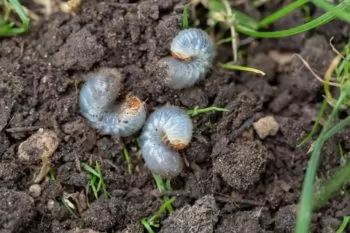
This is one of the most common lawn pests. I am sure you have seen them at least once. If you have not, take a look at the right side of the blog. These white grubs are the offsprings of chafer beetles, which laid their eggs in the lawn soil. After they are born, chafer grubs start eating the grassroots, which of course, will destroy your lawn.
If you notice irregular brown patches of lawn, the next step you should do is to inspect below the lawn turf to see if there are some C-shaped larvae. We call these infamous lawn grubs “C-shaped grass enemies” because that is what they are.
The damage caused by chafer infestation to your yard can be amplified by the fact that grubs are a delicious snack for local wild animals.
For instance, foxes, raccoons, and crows dig up the turf in search of their delicious grubs. But in their pursuit, they end up destroying your beautiful turf.
Lawn Caterpillars: Voracious Grass Eaters
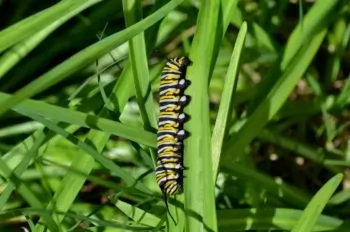
Caterpillar is a general term used to refer to grass loopers. They can cause real damage to your grass blades or roots.
We believe in the green beauty of your yard. But caterpillars, as one of the most common lawn destroying insects, only see your lawn as food. And they are voracious because they need to prepare their bodies to transform into a flying insect.
One day, the caterpillar will stop eating and hang itself upside down from a twig and become a cocoon. A couple of days later, it will emerge from the cocoon and fly.
Lawn caterpillars come into action at night. They start feeding out of your grassroots and blades. They are pests that literally eat your efforts to achieve a green lawn. It is normal for them to hide during daylight between the roots of your grass.
One thing to take into account is that between the months of August and October, there is a big presence of lawn caterpillars. This can get worse if there is a lot of rain or humidity in the environment.
Of course, we know that they eat a lot because they go through a metamorphosis to turn into something beautiful, like a glamorous butterfly. What? No, of course not. Lawn caterpillars in their adult stage turn into an ugly moth that has a wingspan of 5.5 inches long.
So, there is no reason to allow caterpillars to feed on all your efforts and costly investment you made to have a green lawn.
But How Do I Know There Are Caterpillars in My Lawn?
Easy to do it. You just need to leave a damp towel over the grass overnight. If you see some caterpillars hiding under the towel, you need to apply some treatment to your lawn as soon as possible.
Sod Webworms: Weavers of Destruction!
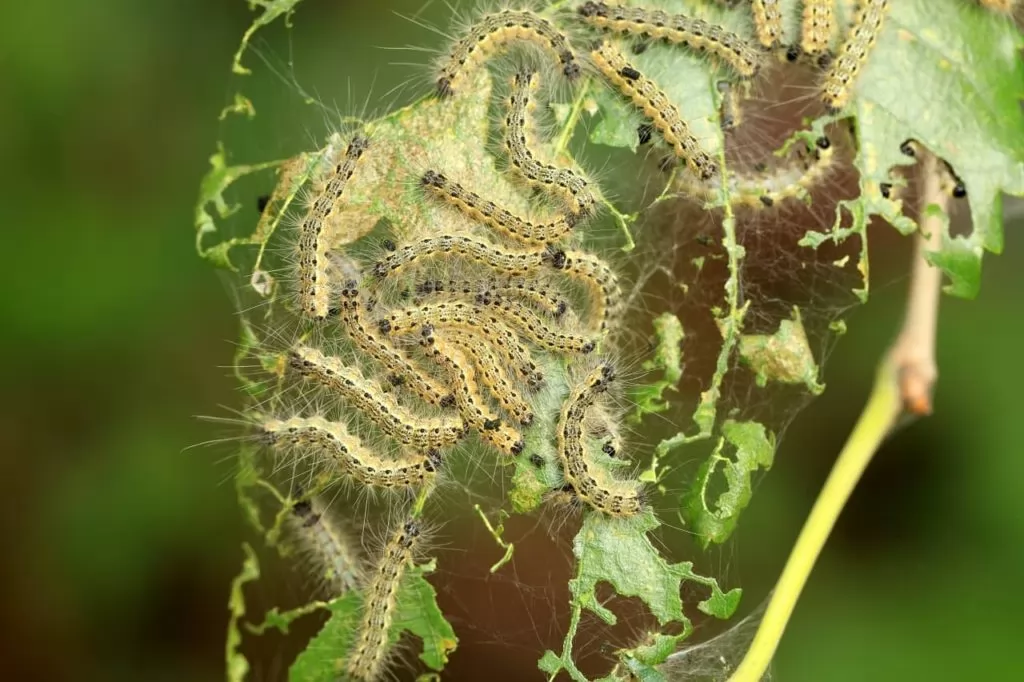
Sod webworms are the larvae of Crambus, an ugly moth. The color of these larvae varies from greenish to brown, gray, or beige. Most larvae have dark, circular spots all over their fat bodies.
Of course, they are fat because they are preparing themselves to get inside a cocoon and become a moth. Seriously?
And they are fat because they feed primarily on grass blades and stems. They are known to be nasty, destructive, and silent lawn destroying insects. Sod webworms aren’t big, but they can inflict significant damage on your lawn grasses.
They are sneaky grass eaters. You won’t see them because they hide during the day and eat at night (no wonder they are so fat).
How Do I Know There Are Sod Webworms in My Lawn?
You’ll know you have webworms when you start noticing baseball-sized brown spots on your lawn. And you gotta act quick, because one webworm can lay up to 200 eggs every summer.
If you identify sod webworms early enough, you must spray a water and dish soap solution to bring them out.
Once they are on the surface, you can rake them to get rid of them.
Fall Armyworms: They Go to War with Your Lawn!
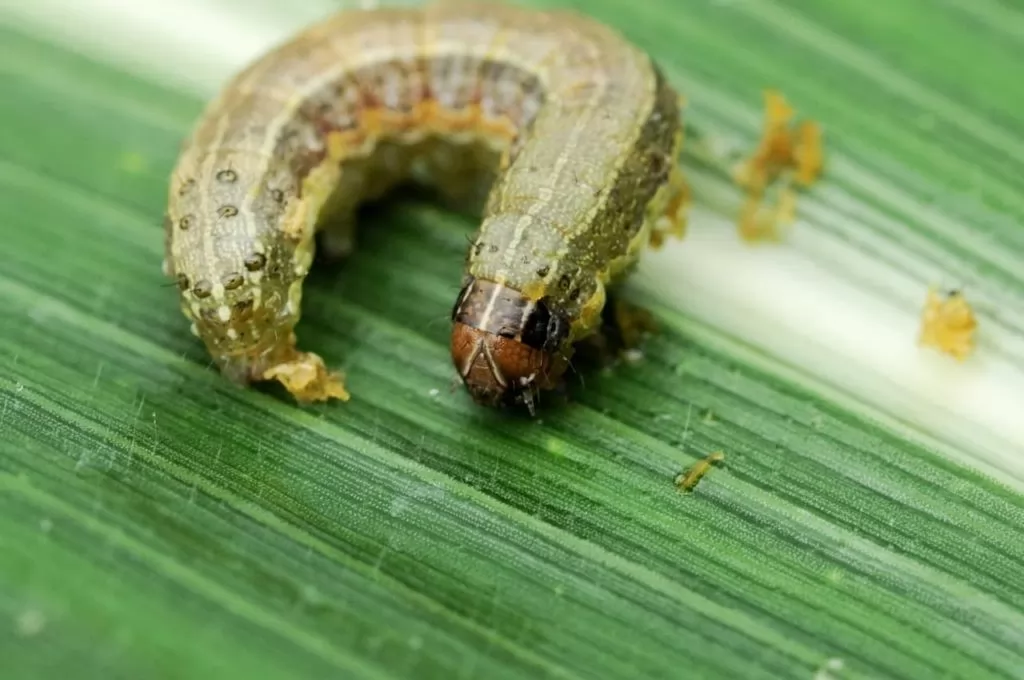
Armyworms are the enemy troops. Its scientific name is Spodoptera frugiperda. Do you want to know the meaning of the word “frugiperda”? Well, it derives from the Latin that means “lost fruit.”
They are one of the most common insect pests, and they always aim to destroy crops. They also enjoy eating your grass.
They go to war with your lawn. It’s the same thing as with the two previous types of insects and caterpillars; they devour your grass plants.
Fall armyworms will eat your grass blades and stems. Another scary thing is that they reproduce fast. These worms can lay many small eggs that hatch within a week.
And then, these larvae will start eating all your green lawn for three weeks before they become moths. So, you have to make sure to hit them back with the best pest control measures before they break havoc on your lawn.
June Beetles: Don’t Let Them Rock in Your Garden!
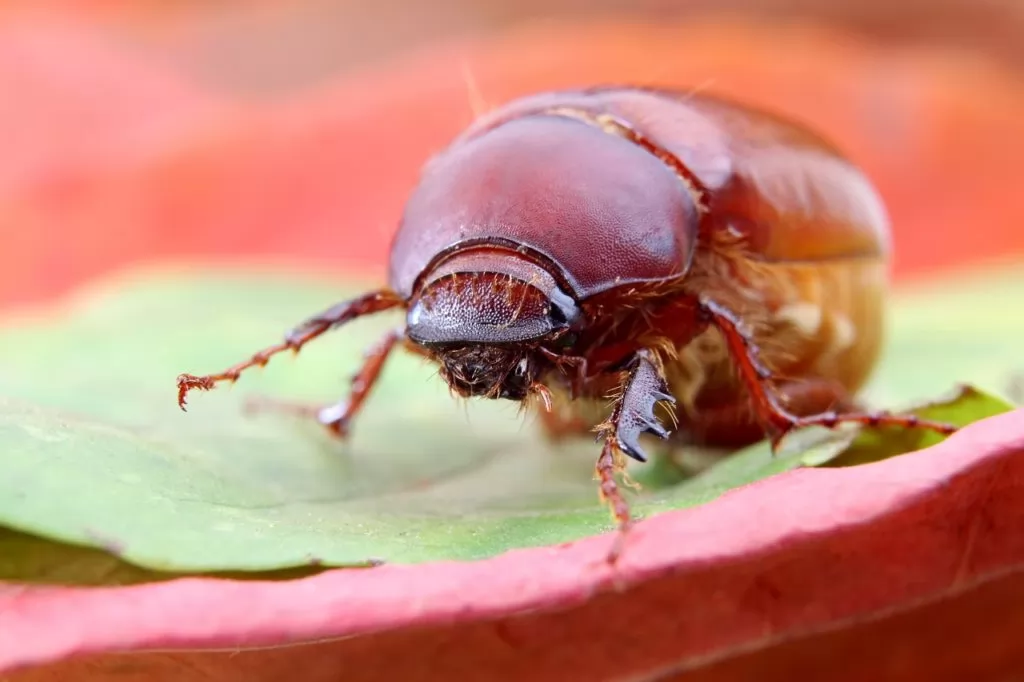
Now, it’s time we talk about the beetles. Sadly, these aren’t The Beatles, whom we all love. These are the June beetles that most homeowners hate.
But why? Well, the June bugs eat lawn roots, grass blades, and even bushes and tree leaves.
When they are little grubs, they live underground and eat grassroots while the adult June bugs can eat the leaves of trees, shrubs, flowers, etc.



